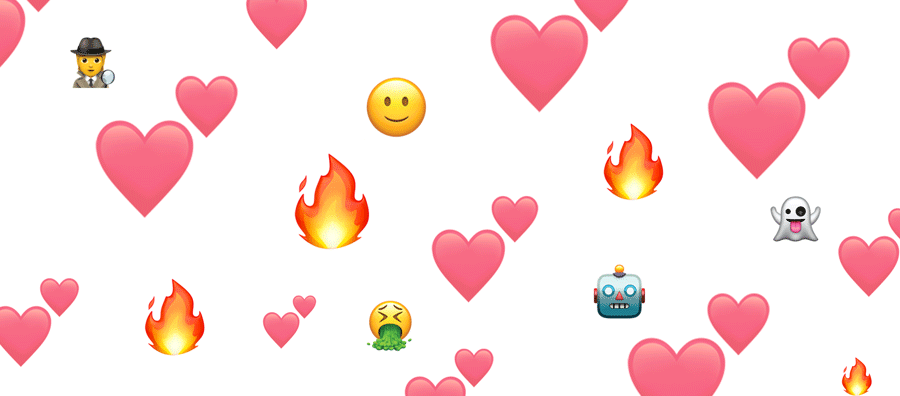Advice on Valentine's Day:
Why email marketing is like
dating


Written By John Hendricks CEO
February 14, 2020
Valentine’s Day is here, and it has us reminiscing about past dates—the good and the bad. At ERGO, we’re working to perfect marketing automation, and we’ve come to realize (in light of the romantic holiday) that when it comes to purchases, the decision-making process is a lot like dating. There are countless brands to choose from, like all those fish in the sea.
Digitization has made targeted marketing more prevalent than ever, shining a light on just how different the consumer journey is for each individual customer. An integral step in that journey—whether it’s within automotive, enterprise tech, healthcare, luxury travel, or financial services—is the awareness and consideration stage, much like casual dating to find the right match. The purpose of that first date is not to walk down the aisle, but rather, to hopefully get a second date. And a third, and fourth, and so on.
The power of marketing automation effectively navigates that process, and—just as successful dating can eventually lead to lifelong partnership—builds a personalized, cross-channel experience that leads to a purchase. ERGO's Smart Content takes this a step further by providing hyper-personalized, hyper-relevant emails for consumers. Over time, our clients are able to cultivate longterm relationships with their customers by building trust and only providing them with relevant content.
But it all starts with that first date, where, as many of us have learned, one misstep can cost you. Let’s take a look at five first-date archetypes that end the relationship before it’s even begun, and see how brands can use marketing automation to avoid being “that guy” when it comes to the customer journey.
1. The Interviewer

The Interviewer asks questions relentlessly, some of them way too personal. You’re left wondering what that person is ever going to do with all that information.
Marketers often make the mistake of asking too many profile/registration questions right away, but they never end up using the data. Although detailed information is valuable when qualifying prospects, the first touch is not the time to request it. Instead, it’s best to ask the absolute bare minimum up front—then, as the relationship evolves, develop the profile perpetually with a meaningful two-way value exchange over time.
2. The Over-Sharer

The Over-Sharer tells you everything on the first date—how much money they make, how much emotional baggage they have, how many degrees are framed on their wall...
Remember, the first interaction with a consumer is to make a visceral connection. When it comes to that “first date,” less is more. Marketers must carefully nurture each prospect, building trust and earning a positive reputation. Knowing not only what to say, but also when to say it, is essential when developing a long-term relationship.
3. The Ghost

You have a couple of amazing dates, but then the Ghost disappears. You’re left wondering what happened, and eventually you forget about them entirely.
Research shows that sales and marketing efforts tend to drop off around touch 3 or 4. In reality, the majority of conversions, purchases, and revenue happen later in the funnel. It’s important to think through the progression beyond those first touches, and sustain the conversation across 7–10 touches.
4. The Creeper

The Creeper stares a little too longingly into your eyes, misinterpreting your politeness for intimacy and interest.
Misinterpreting signals can happen easily when it comes to lead scoring models. A single click doesn’t mean the customer is itching to purchase. One danger of scoring is that it can often overgeneralize, creating a false sense of understanding the customer mindset and preventing marketers from accurately measuring fit and interest. A better approach is to pair lead scoring with first-party profile development, which contextualizes each relationship and allows for a more adaptive conversation.
5. The Robot

The Robot shows up with a scripted conversation, and it’s clear this isn’t their first—or last—“performance.” You find your mind wandering to your list of errands.
One big mistake marketers often make is treating every interaction the same way. Sometimes, even after investing money and bandwidth, many marketers are not fully leveraging the capabilities of their platform. The platform is a microphone, amplifying the message and allowing for large-scale reach—but the best microphone on the market will do you no good if you aren’t saying something relevant. Try spending the next six months planning your content and data strategy before choosing a solution.
If you want that second date (and third, fourth…) with your potential customer, learn your marketing automation etiquette. Ask the right questions at the right time, make the effort to get to know your prospects’ behaviors, stick around long enough to create valuable relationships, and tailor each conversation to each individual need.
The point is not to spam your potential customers, much like that person you went on one date with last week who won't stop blowing up your phone with "Sup?" texts. The idea, rather, is to use technology like Smart Content to construct thoughtful emails, and to only send them when you have relevant content for each individual customer. This will create trust with your customers, and will provide them with emails they actually want to open.
A successful solution requires detail, technology and a complex vision. Think about what you’re doing now, and what you strive to do. If you were to ask each of your prospects whether they feel your brand genuinely understands each customer and what’s on their mind, what would they say?
The answer is your key to effective engagement and smart marketing automation, and if you’re lucky, maybe even wedding bells.
To learn more about Smart Content, check out this article. And be sure to take a look at some 2020 email trends to optimize your marketing emails. Best of luck, and happy Valentine's Day!
